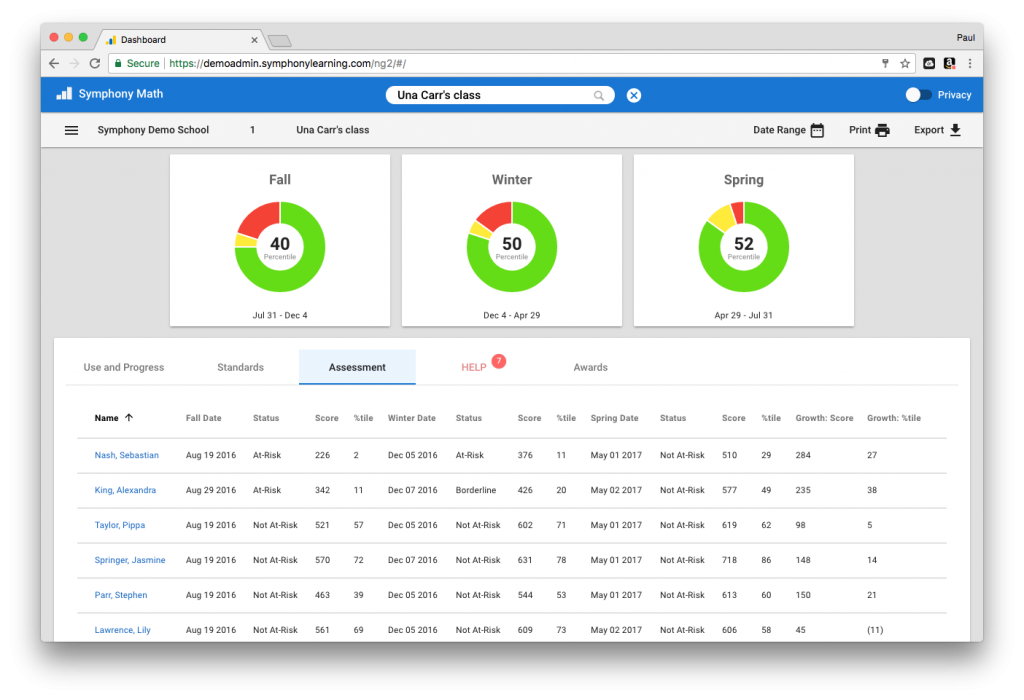Integrated Assessment
A preview of assessment items during a typical testing session.
The Symphony Math assessment is a computer adaptive test that can determine which students are at risk for math failure, and can be group-administered to all students in a district. These may be students who otherwise do not yet show any symptoms of a math learning difficulty. The assessment identifies the precise instructional level of each student, providing a base-line for intervention and progress monitoring.
Designed for Younger Students
Symphony Math assessments are available for students in grades K-8, but they were designed to be used independently by younger students. This allows educators to identify students at risk for math failure in the first month of kindergarten, instead of waiting until grade 4 when end-of-year grade 3 results become available. Instructional supports can be implemented early in the student’s learning career, to close the gap with peers before it becomes unmanageably large.
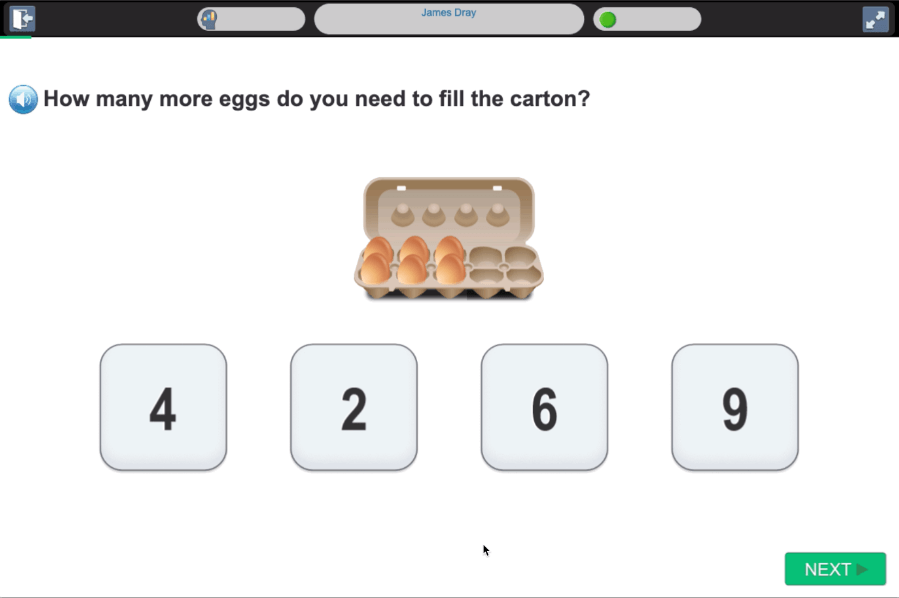
Standards-Based Items
Symphony Math conforms to the Common Core State Standards (CCSS), and adopts the same commitment to in-depth learning and understanding. By aligning its assessments to the CCSS, Symphony Math enables schools to focus on assessing a narrow range of target concepts, at the in-depth and rigorous level specified by the CCSS.
The Symphony Math Screener probes for in-depth understanding by using technology-enhanced test items. Symphony assessment problems challenge students to produce multiple correct solutions, demonstrate fluency, graph lines, use measurement tools, and solve for the exact answer, instead of providing only a simple, multiple choice. These technology-enhanced problems require students to demonstrate a deeper level of understanding to produce correct responses.
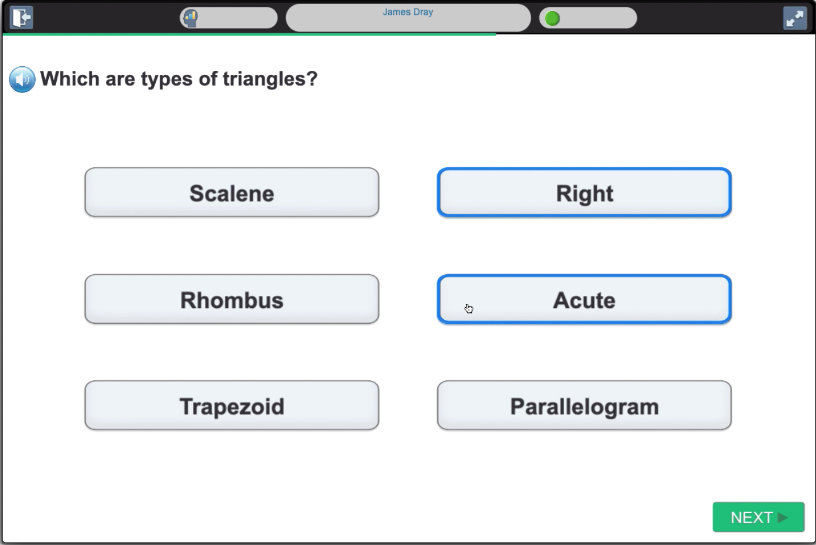
Instant Results
Results are immediately available to authorized personnel, from the classroom teacher all the way up to the district office. Reports show groups and individual students who are At-Risk, Borderline, or Not At-Risk for math failure.
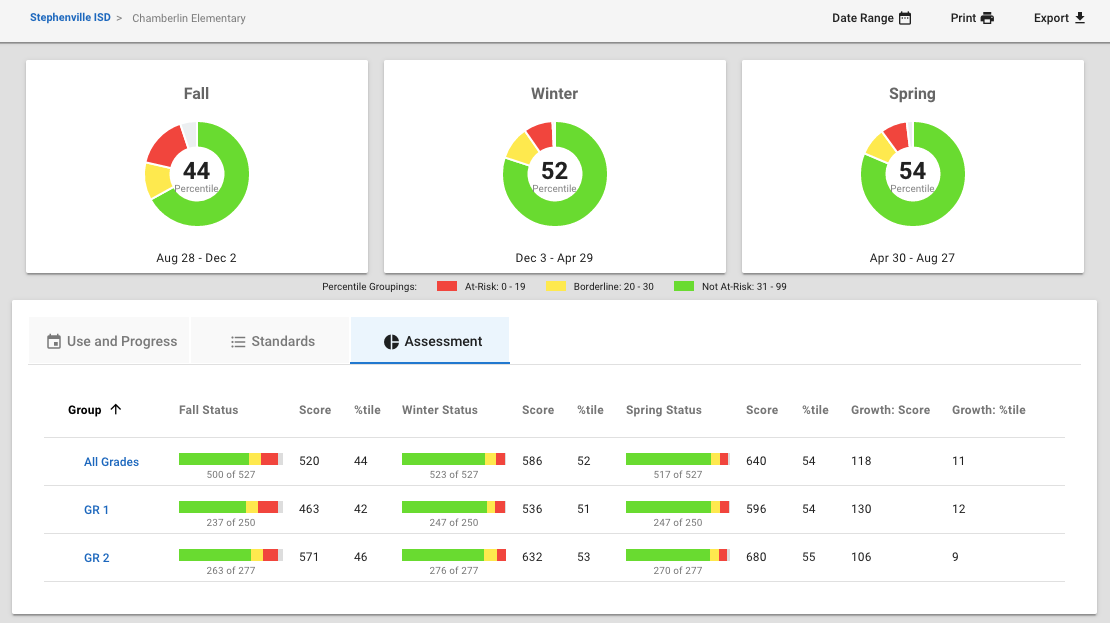
Targets Precise Mathematical Ability
The Symphony Math assessment adaptive testing engine dynamically locates each student on a standardized scale of mathematical ability. The test is based upon an item bank of 900 test items that were specifically designed to measure progress against the Common Core State Standards (CCSS) for Mathematics. Assessment test items have been calibrated and organized on a scale of low difficulty to high difficulty; the program applies Item Response Theory algorithms which move the student to an easier item after an incorrect response, and to a harder item after a correct response.
Each student begins the assessment with an item that is two years below the student’s enrolled grade level. Depending on the student’s pattern of correct and incorrect responses, the test items will become more or less difficult. A student may see between 18 and 24 assessment items during a testing session. The assessment ends after it has seen enough responses to determine the student’s location on the standardized scale of CCSS mathematics ability.
Provides Baseline Diagnostic for RtI
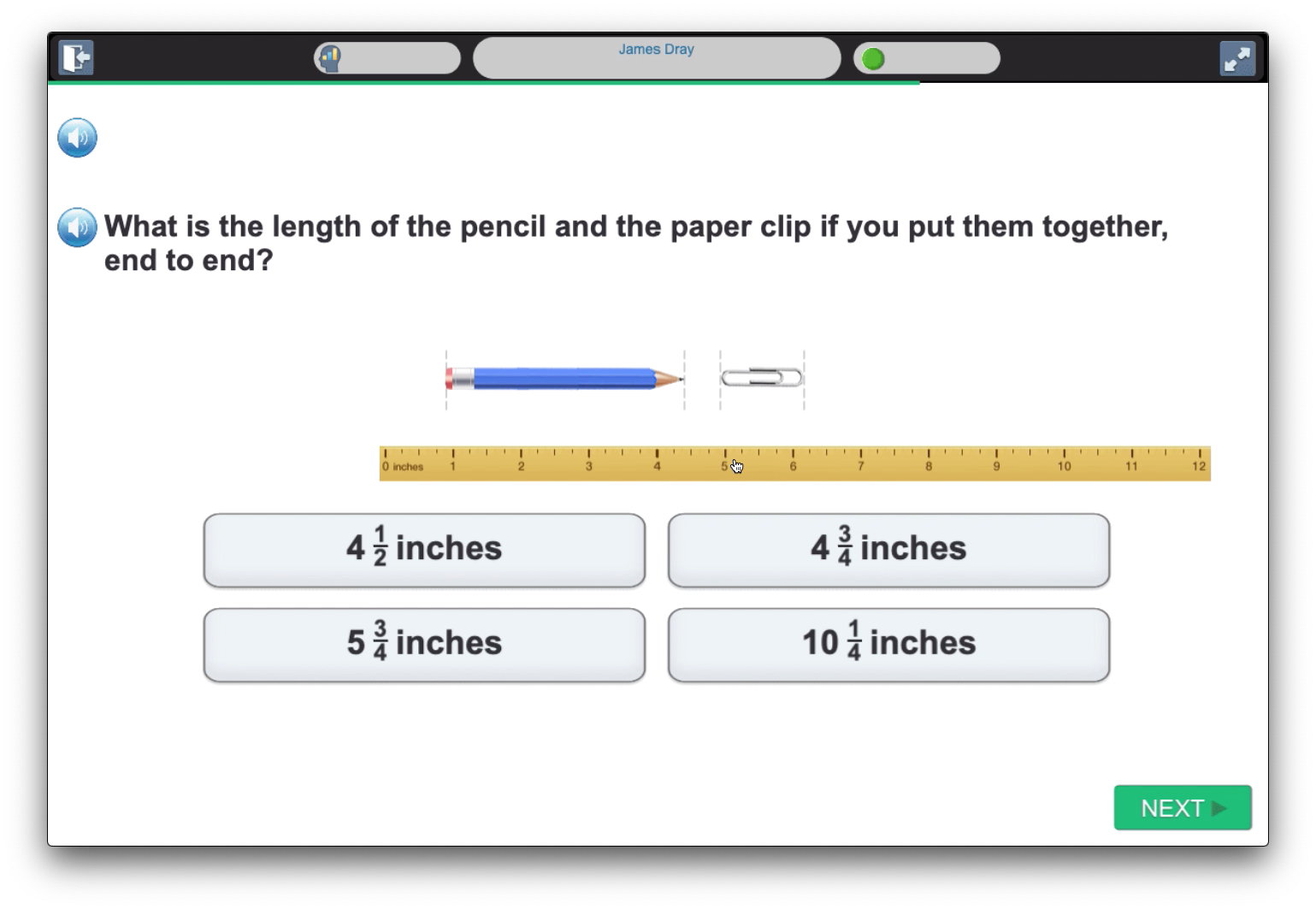
Symphony Math supports Response to Intervention, helping assess and develop in depth understanding of mathematics. Some screeners used for Response to Intervention only measure fluency, or focus on a single skill, and are not aligned to the depth and rigor of the Common Core State Standards. However, using Symphony Math minimizes the chance that an at-risk student might quickly learn a skill needed to pass the fluency screener (e.g. single digit addition) without acquiring the in-depth and rigorous understanding necessary to succeed in a CCSS curriculum.
Multiple Administrations Quantify Student Learning Over Time
All students receive a standardized score on a common vertical scale which reveals how the tested students performed in comparison to grade-specific national norms. Because Symphony assessment scores are expressed on a vertical scale, students’ scores can be readily compared across grades. We all expect that most first-graders have learned more than most kindergartners, most second-graders have learned more than most first-graders, and so on. With Symphony’s scale scores, teachers can track performance regardless of assigned grade, allowing tracking of students across grades, thus supplying a detailed picture of their progress over time.
The Symphony assessment is given in the beginning, middle, and end of each school year, and testing windows can be customized by Administrators so that students receive the assessments at appropriate times for the school and district.
